Is it possible to run a socially distanced photography workshop in the time of COVID? Yes. Is it easy? No. But that’s just what I did recently in Moab, Utah.
I’ve been leading a fall workshop in Moab since 2017, and had another planned for this year. By summer though, it looked as if I’d have to cancel it along with the others I’d scheduled for the rest of this year. But when I sent an email to my regulars with that news, about a half dozen responded by asking, “If I drove myself, would you consider still doing it?” That was something I hadn’t thought of.
Over the last several years I’ve been doing more and more U.S. workshops sticking to a simple plan. Everyone flies into the same city, where an assistant and I pick them up with a pair of minivans. Limited to just six guests, that means each person has their own door there’s plenty of room for luggage and gear. Plus, my clients don’t have to worry about car rentals and driving. It’s also a great opportunity for everyone to get to know each other, and we have some fun conversations that go beyond just photography. We also have most of our meals together, which again offers more time for socializing. With COVID, of course, none of that would work. But if people had their own vehicles, and we skipped meals together…
Which is just what we did. Five friends met me in Moab where I handed out schedules for the week, as well as emailing them the GPS locations for the places we’d be visiting. All of our shoots were outdoors, and if we needed to be close together, we’d mask up. I checked ahead of time with the main eateries I’d used in the past in Moab, and they were all doing carryout service so we could avoid being indoors with other people. In other words, we avoided indoor gatherings, or close proximity to others without masks. The only social time we had, aside from the shoots, was a little beer party on the hotel’s outdoor patio, well spaced out, after the Delicate Arch shoot.
For me, it was a chance to try going a bit lighter than usual. While I still have several mirrored Nikon bodies, and use them, I’m shooting mirrorless more and more. On this trip I almost exclusively used my Nikon Z 6 with the Nikkor 24-200mm f/4-6.3 and 14-30mm F/4 Z lenses. Those lenses aren’t “fast” (wide maximum aperture), but I don’t need that for landscape work, and the “slower” lenses mean they’re smaller and lighter. More importnatly, they give me great quality. That meant I could carry a single body with lens attached and just a small waist pack with the second lens and filters. For some of the night photography, I also brought along my Nikon D780 and Nikkor 20mm f/1.8 lens. The only accessories were a polarizing filter, of course, and a variable neutral density (although I really should have brought my 10-stop or 12-stop instead). Plus, of course, my tripod.
Here are some of the photos from the trip, with the stories behind them. Will I do another socially distanced workshop? Probably not. Moab is unique because we don’t change hotels and most shoots are relatively close. Other locations would be more challenging in those and other ways. However, if you’re interested in joining me for next year’s trip. post-COVID, let me know and I’ll add you to the “early notify” list.
Finally, if you’d like to see the rest of the photos from the trip, you’ll find them here. https://reedhoffmann.com/past-workshops/

Even on a very cold mid-November morning, a crowd showed up for sunrise at Mesa Arch. But most of them left right after the sun came up, before the best pictures are made.
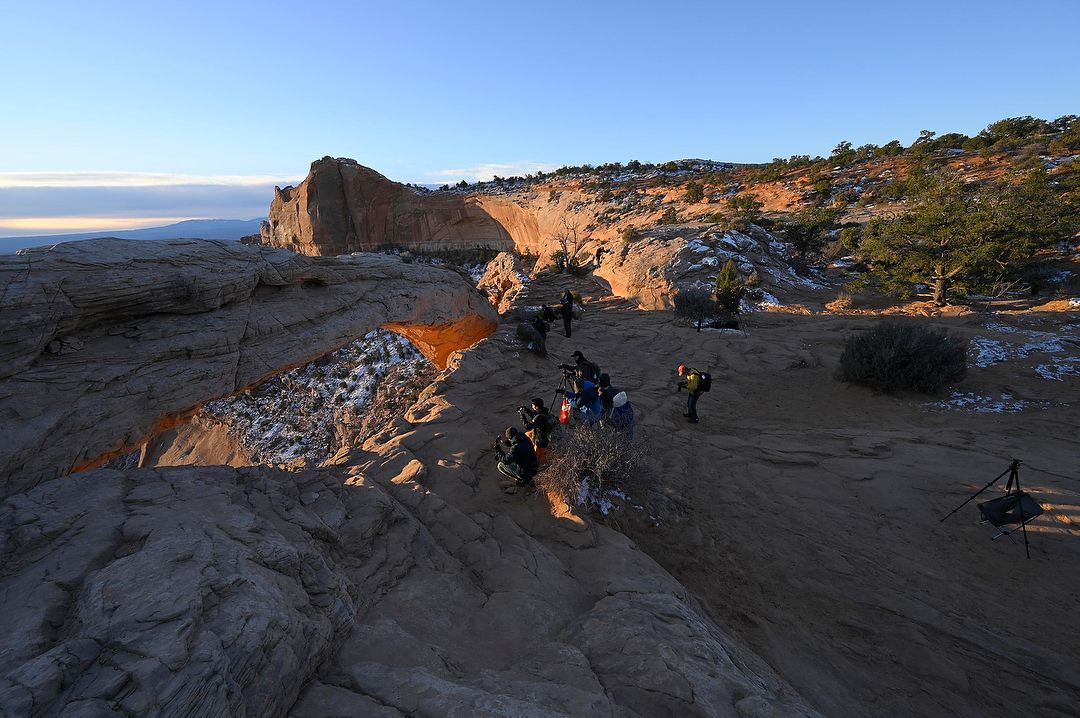
This was all that was left of that crowd by the time the sun was having its greatest impact on the underside of Mesa Arch.
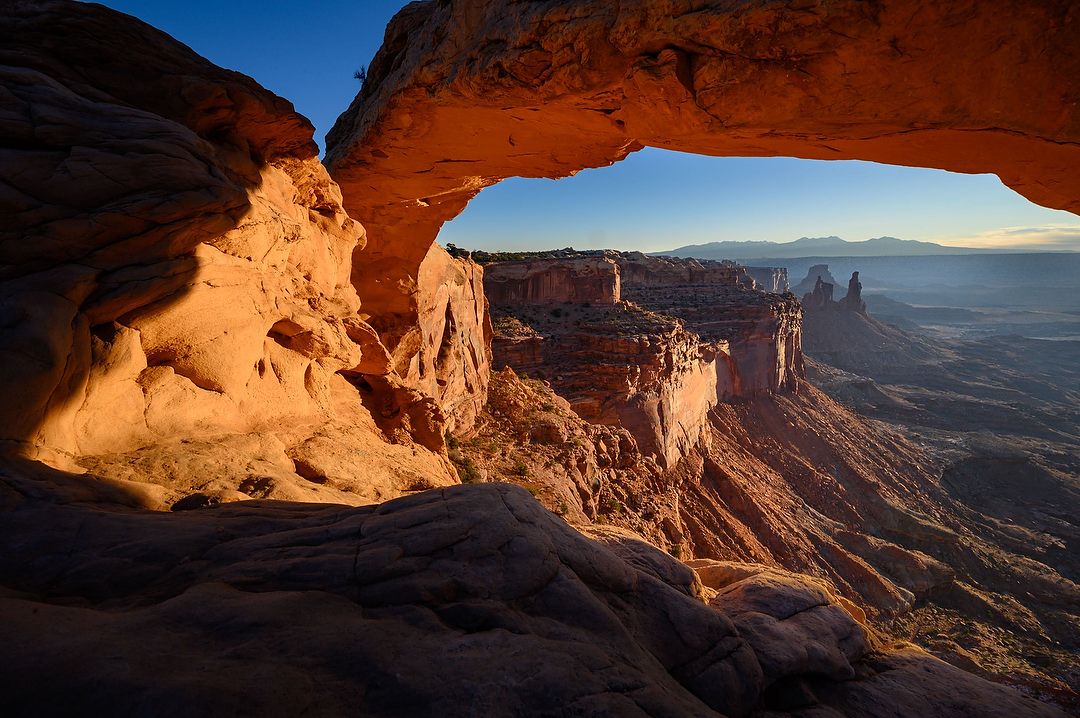
And here’s the result. Until strong sunlight is fully hitting the lower wall, you don’t get the best orange glow on the underside of the arch. And, you need to shoot it from low and close, not standing back to view the entire arch. Nikon Z 6, Aperture Priority, Sunny white balance, ISO 100, 1/60 at f/16 in Matrix metering, -1.3 EV, Nikkor Z 14-30mm f/4 S lens at 14mm.
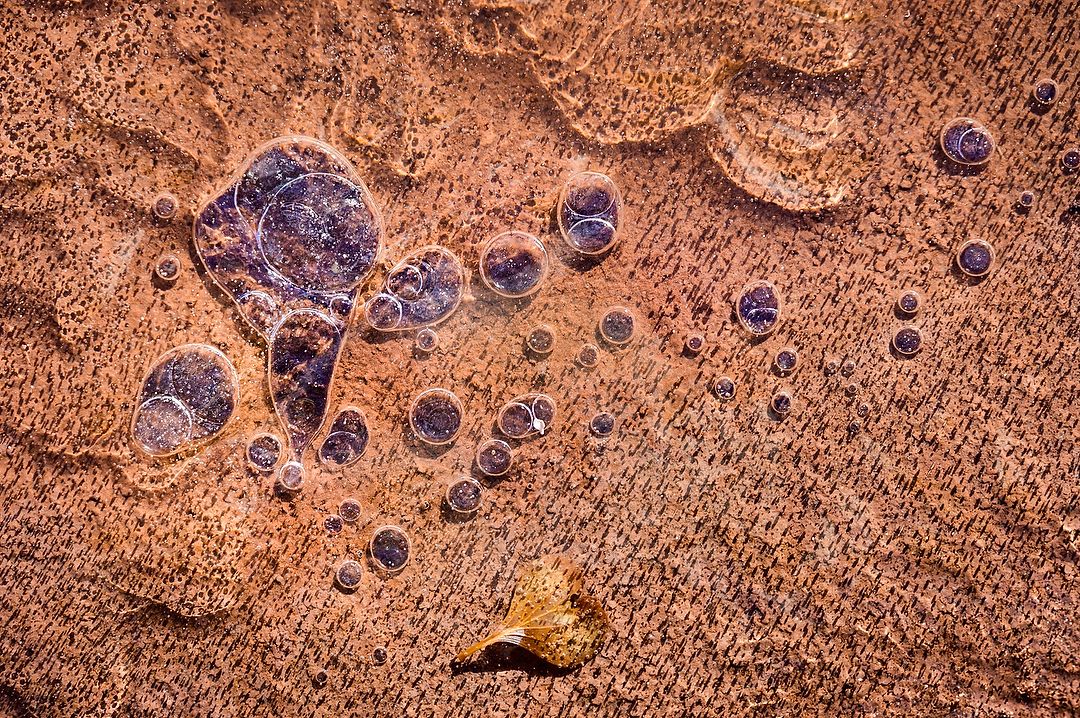
There are great vistas to be seen and photographed at the Green River Overlook, which is why we stop there. But I always remind my group to look down at their feet, for the small things. Otherwise, it’s easy to overlook some beautiful photos, like these air bubbles and leaf frozen in ice. Nikon Z 6, Aperture Priority, Natural Auto white balance, ISO 100, 1/80 at f/8 in Matrix metering, 0.0 EV, Nikkor Z 24-200mm f/4-6.3 VR lens at 130mm.
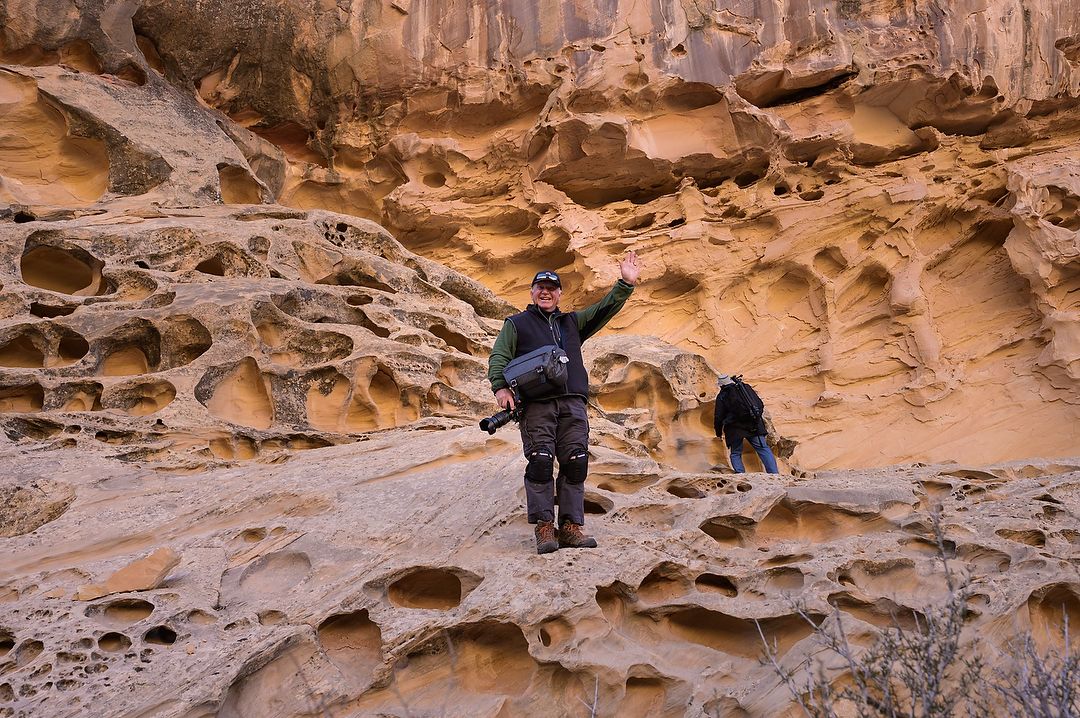
One member of our group, Jim, had been to Moab earlier in the year and suggested we visit Crack Canyon. I changed the itinerary to make that happen, and will definitely visit again next year. Nikon Z 6, Aperture Priority, Sunny white balance, ISO 250, 1/125 at f/6.3 in Matrix metering, 0.0 EV, Nikkor Z 14-30mm f/4 S lens at 28mm.
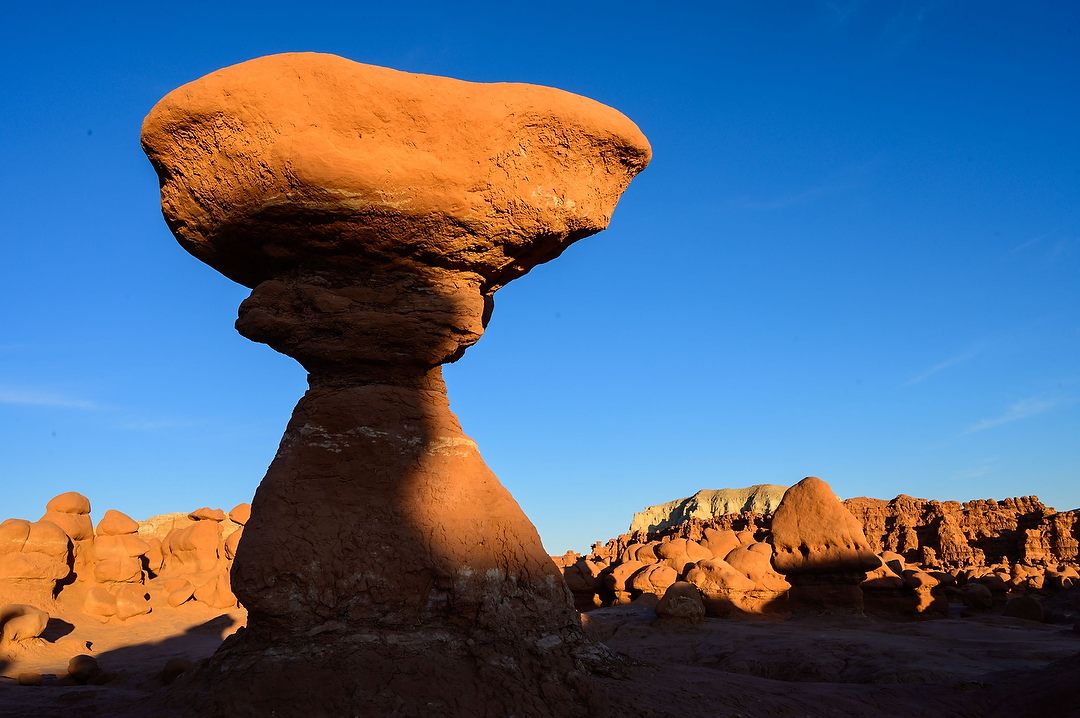
Goblin Valley State Park is not far from Moab, and offers a very different type of landscape from what we see in Canyonlands and Arches. Planning to be there late in the day pays off with great shadows. Nikon Z 6, Aperture Priority, Sunny white balance, ISO 100, 1/60 at f/14 in Matrix metering, -0.3 EV, Nikkor Z 14-30mm f/4 S lens at 23mm.
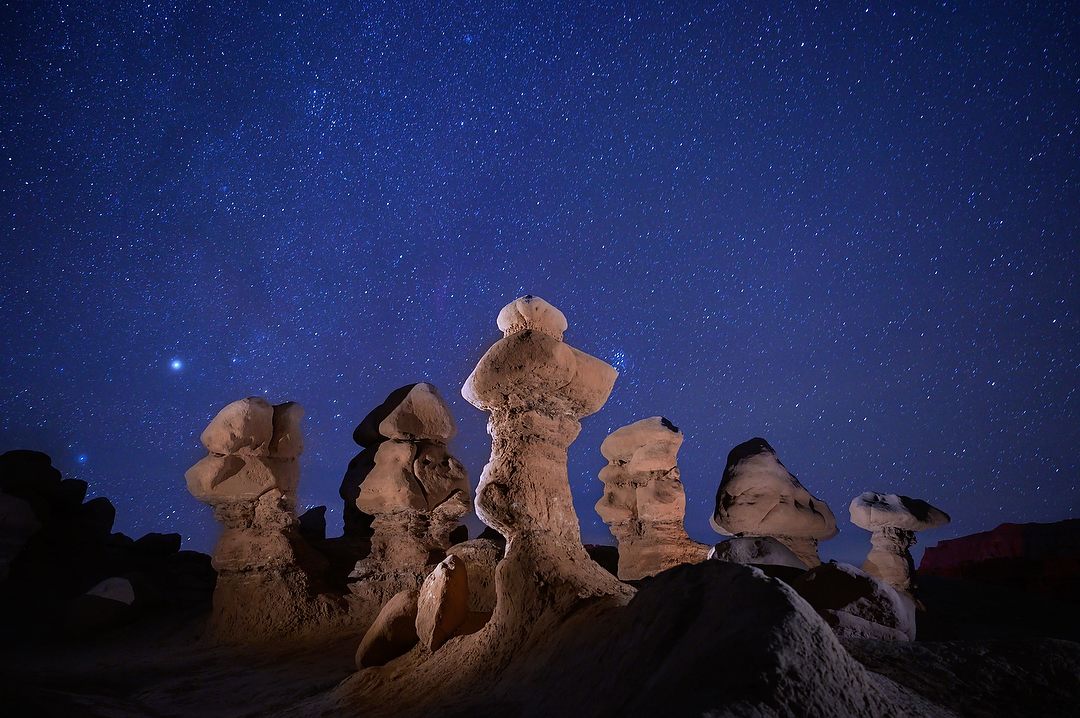
I always tell the group to bring sandwiches so we can stay past sunset at Goblin Valley, and do some low-level lighting. To make this image I used four Lume Cubes. Nikon Z 6, Manual exposure, 3200K white balance, ISO 2500, 30-seconds at f/2.8, Nikkor Z 24-70mm f/2.8 S lens at 28mm.
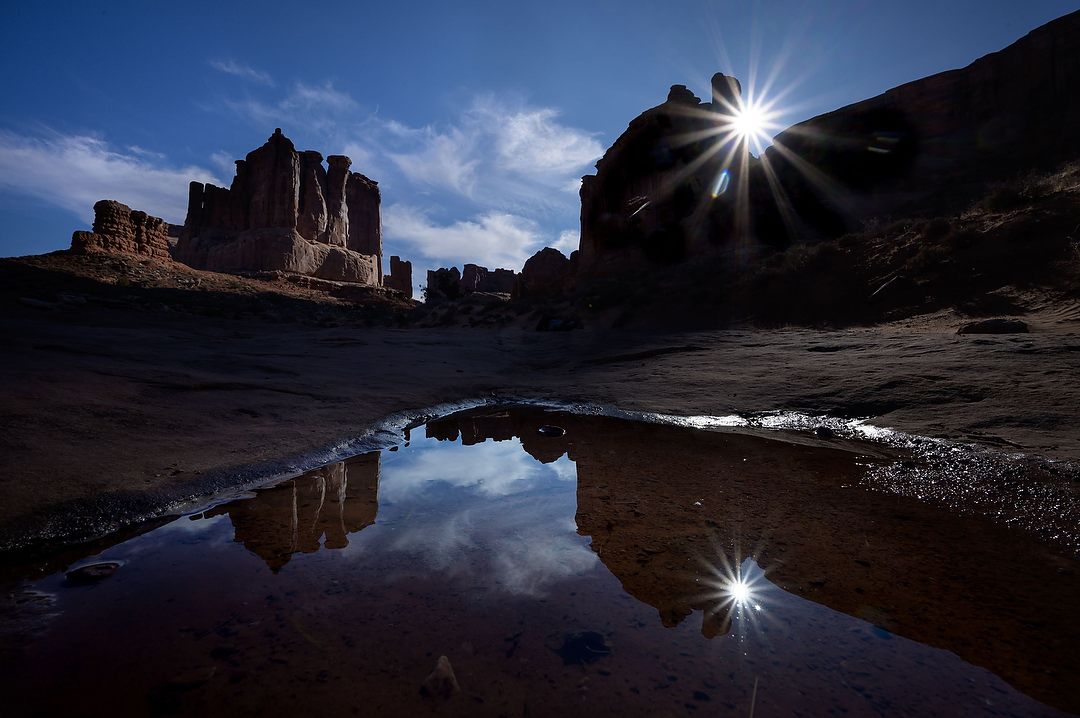
Thanks to a storm passing through two days before we arrived, there were some water puddles which we could use to work with reflections. Having a camera with a flip-down LCD (Z 6) means I can put the camera right at water level. And a small aperture, with a partially blocked sun, results in a nice sunburst. Nikon Z 6, Aperture Priority, Sunny white balance, ISO 100, 1/400 at f/16 in Matrix metering, -2.7 EV, Nikkor Z 14-30mm f/4 S lens at 16mm.
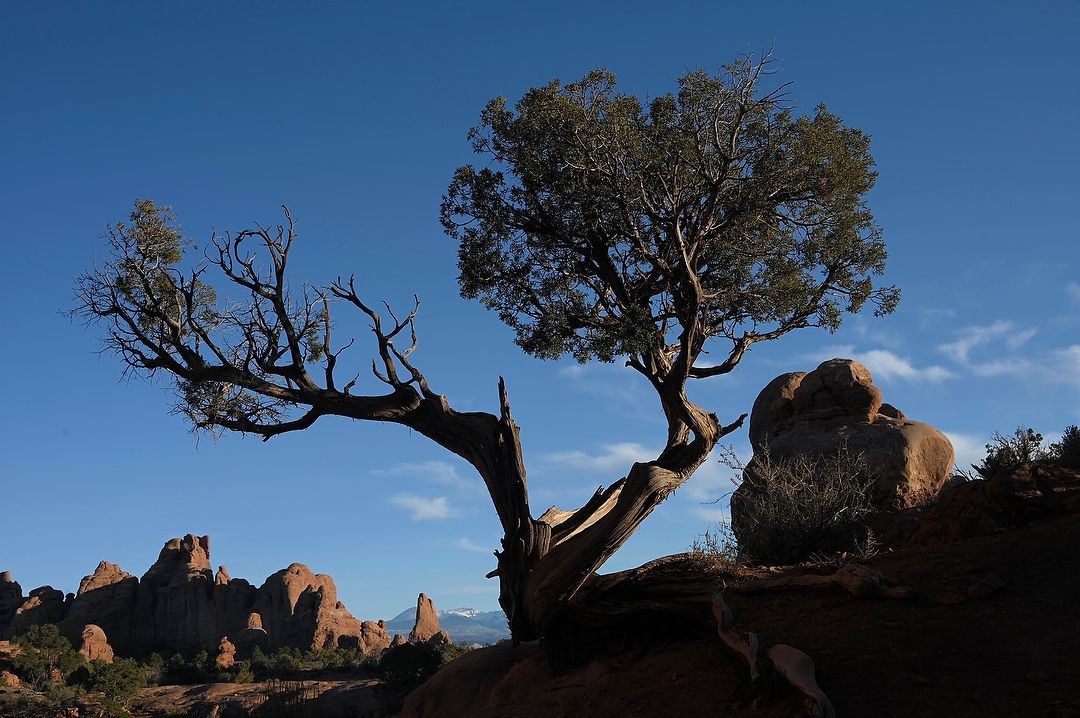
I always warn people to be careful when using polarizing filters, as they aren’t always necessary and can create uneven blue skies. In some cases, though, they really make the picture. This is without a polarizer…
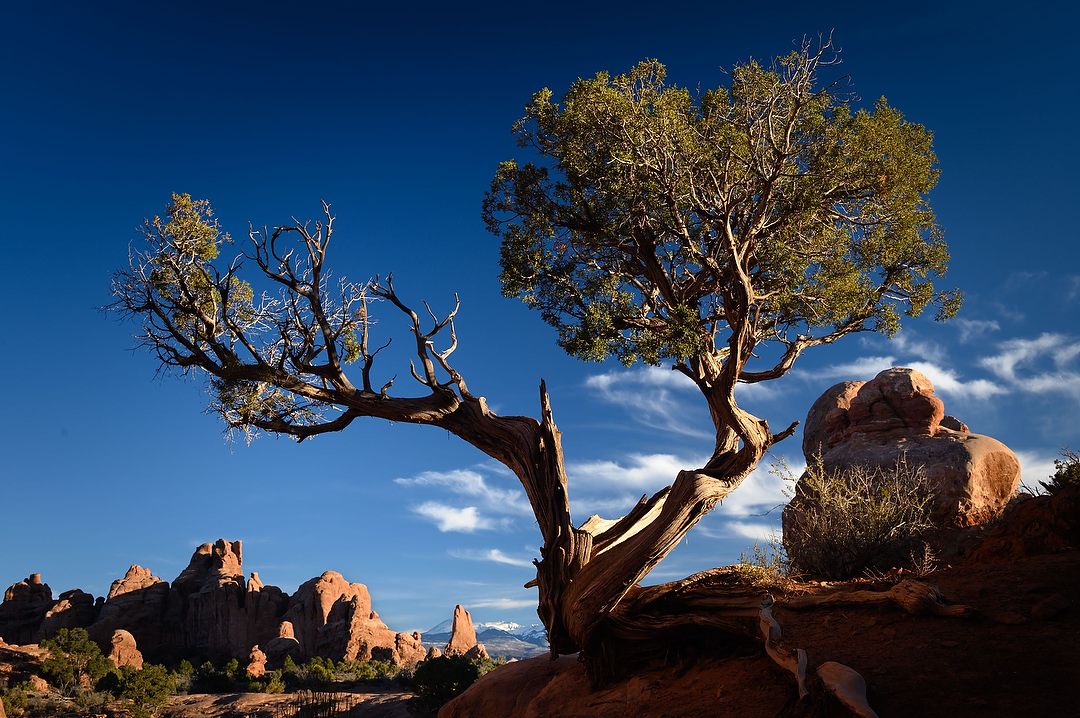
And this is the same scene with a polarizing filter. Here’s another case of not getting caught up in the “big famous view.” This area is behind the North and South Windows (two famous arches) in Arches National Park. But few people take the trail around to the back. Curiosity can be as important to a photographer as having the right gear. Nikon Z 6, Aperture Priority, Sunny white balance, ISO 100, 1/50 at f/10 in Matrix metering, -1.3 EV, Nikkor NIKKOR Z 24-200mm f/4-6.3 VR lens at 37mm..
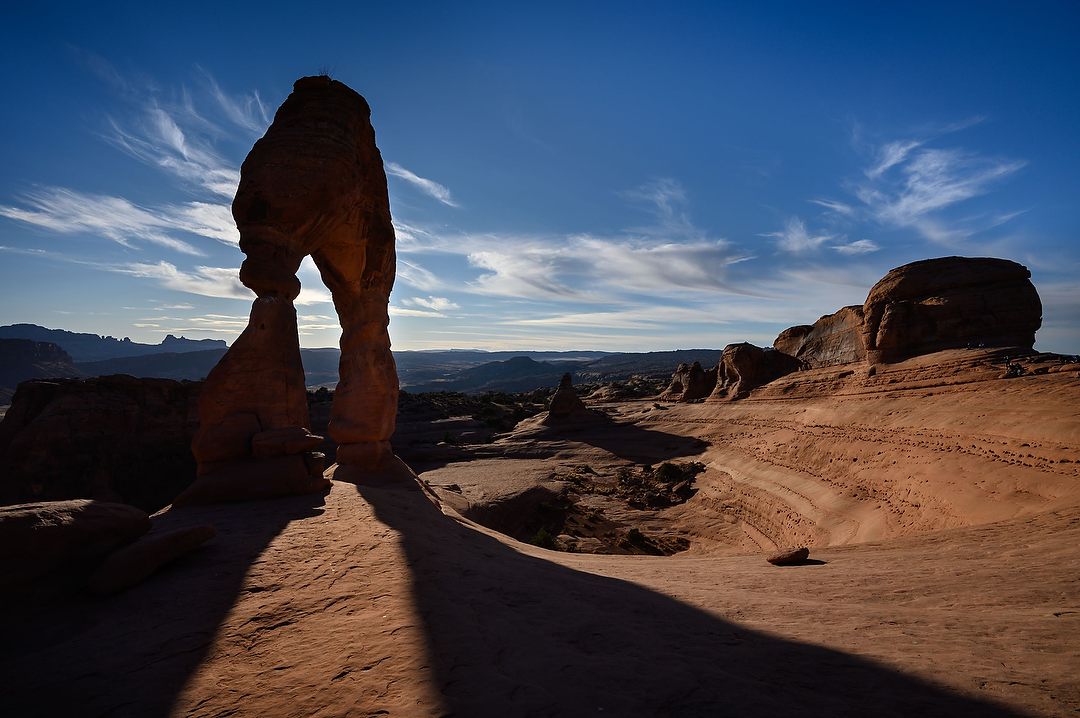
Another example of looking for a different angle. This is Delicate Arch, and the classic place to photograph it is from the area to the side of the large formation at the far right of this scene. From this side, though, you can work with the shadow it creates, and in this case, include the clouds that were primarily in the west. Nikon Z 6, Aperture Priority, Sunny white balance, ISO 100, 1/800 at f/8 in Matrix metering, -1.0 EV, Nikkor Z 14-30mm f/4 S lens at 17mm.
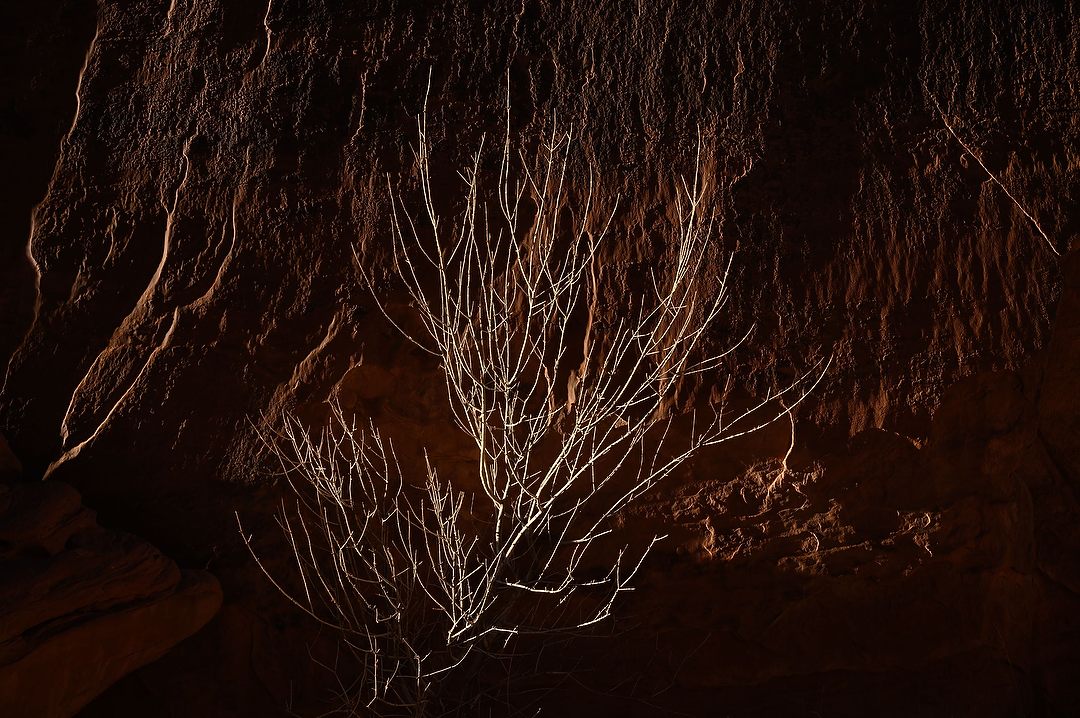
After visiting the most famous areas in Arches National Park, I like to take the group to a lesser known area, Devil’s Garden. Yes, it also has a few arches, but there are some other really nice photos that can be made here. The entrance to the area is through two walls of rock, and in the morning it’s a great place to play with light and shadows. Nikon Z 6, Aperture Priority, Sunny white balance, ISO 100, 1/125 at f/9 in Matrix metering, -1.0 EV, Nikkor Z 24-200mm f/4-6.3 VR lens at 37mm.
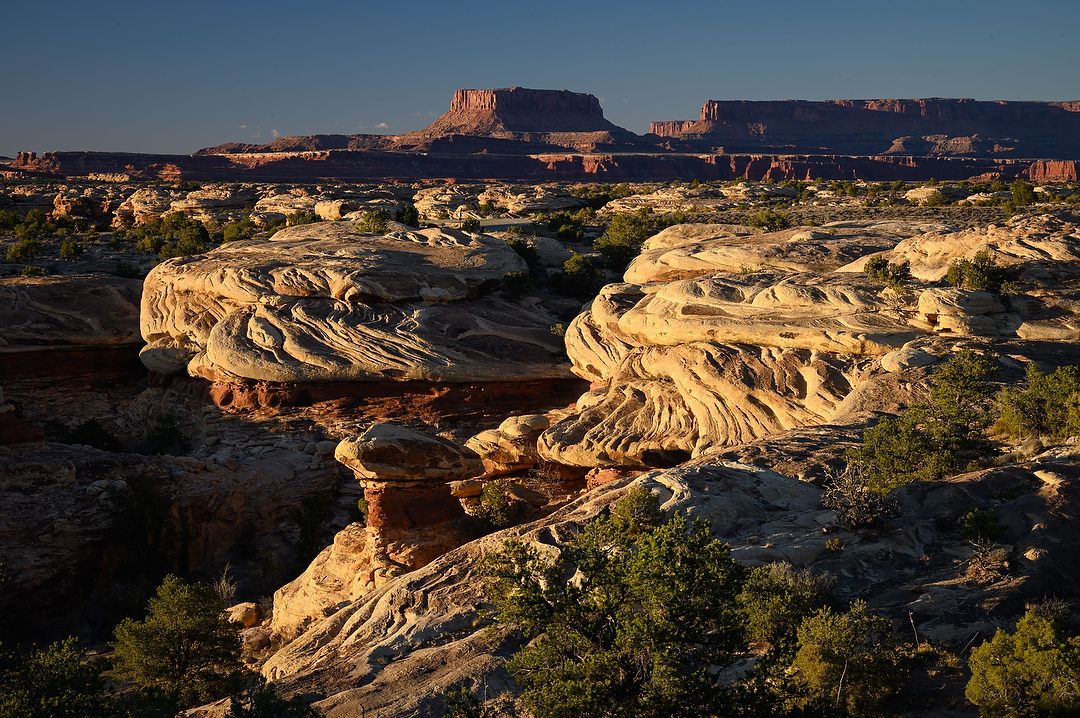
When possible I try to arrive a day early for my workshops, so I can scout possible new locations. I did that in Moab, which is how we ended up spending our last afternoon and evening in the Needles District of Canyonlands National Park. The research I’d done before visiting there had said long hikes were required for good photos. That was wrong. This scene was no more than a quarter-mile from the parking lot at Pothole Point. Nikon Z 6, Aperture Priority, Sunny white balance, ISO 100, 1/20 at f/16 in Matrix metering, -0.7 EV, Nikkor Z 24-200mm f/4-6.3 VR lens at 77mm.
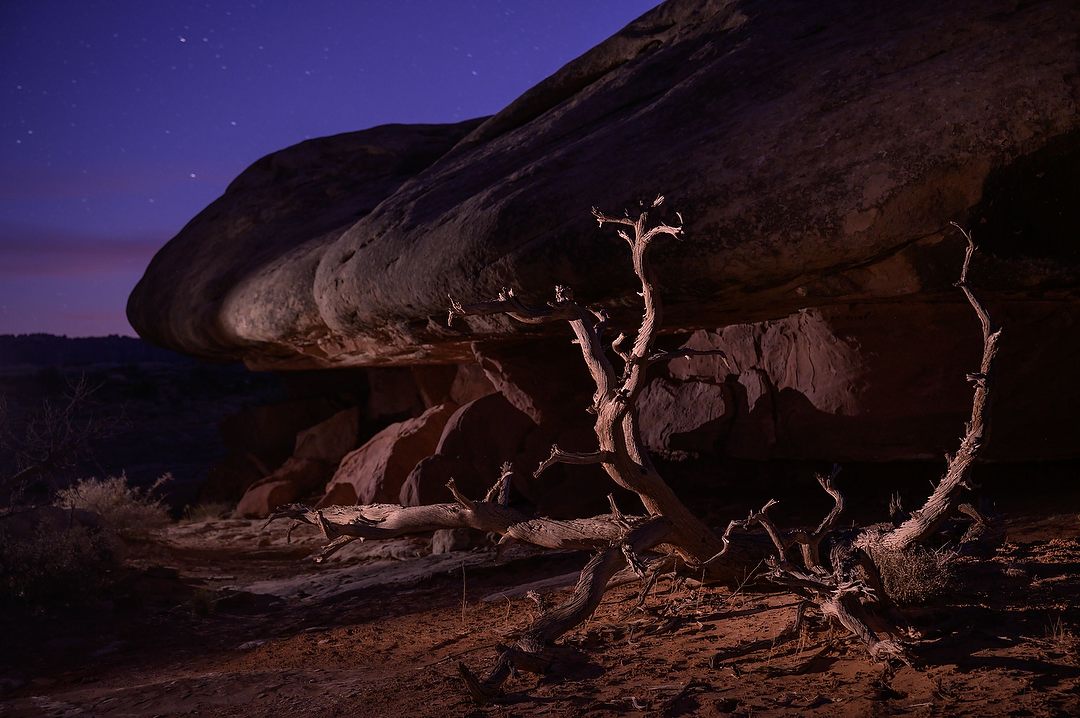
Also at Pothole Point, this scene was nothing special in the daytime, but after sunset, lit with a pair of Lume Cubes, it looked pretty nice. Nikon Z 6, Manual exposure, Cool White fluorescent white balance, ISO 1000, 30-seconds at f/4, Nikkor Z 24-70mm f/2.8 S lens at 57mm.

Our last shoot of the trip was at Roadside Ruin, also in Canyonlands. A Native American granary dating back over a thousand years, one Lume Cube with a snoot was all that was needed to make it stand out under a shooting star sky. Nikon Z 6, Manual exposure, 3800K white balance, ISO 2500, 25-seconds at f/2.8, Nikkor Z 24-70mm f/2.8 S lens at 26mm.
(If you like this story, please share it with your friends and let them know about the links on photography that I post on my business Facebook page. I’m also on Instagram and Twitter, @reedhoffmann. And if you’re curious about the workshops I teach, you can find them here. And, you can subscribe to this blog on my home page.)

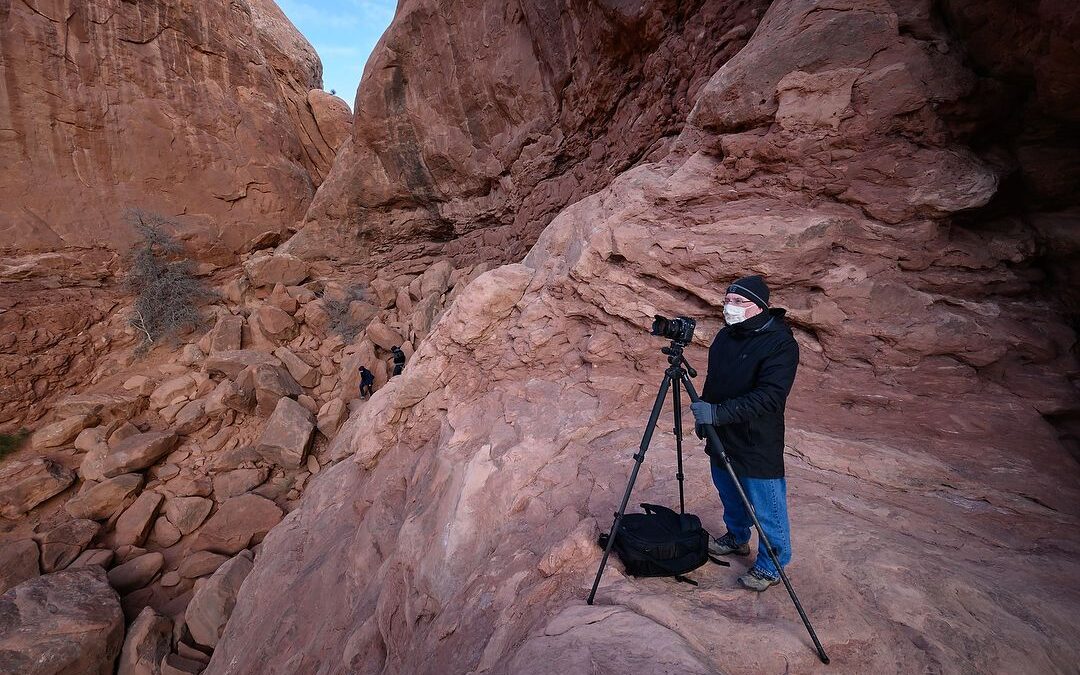
Thanks Reed for another series of creative and unique perspectives on landscape photography
Wish I lived within driving range of Moab
Best
Alan